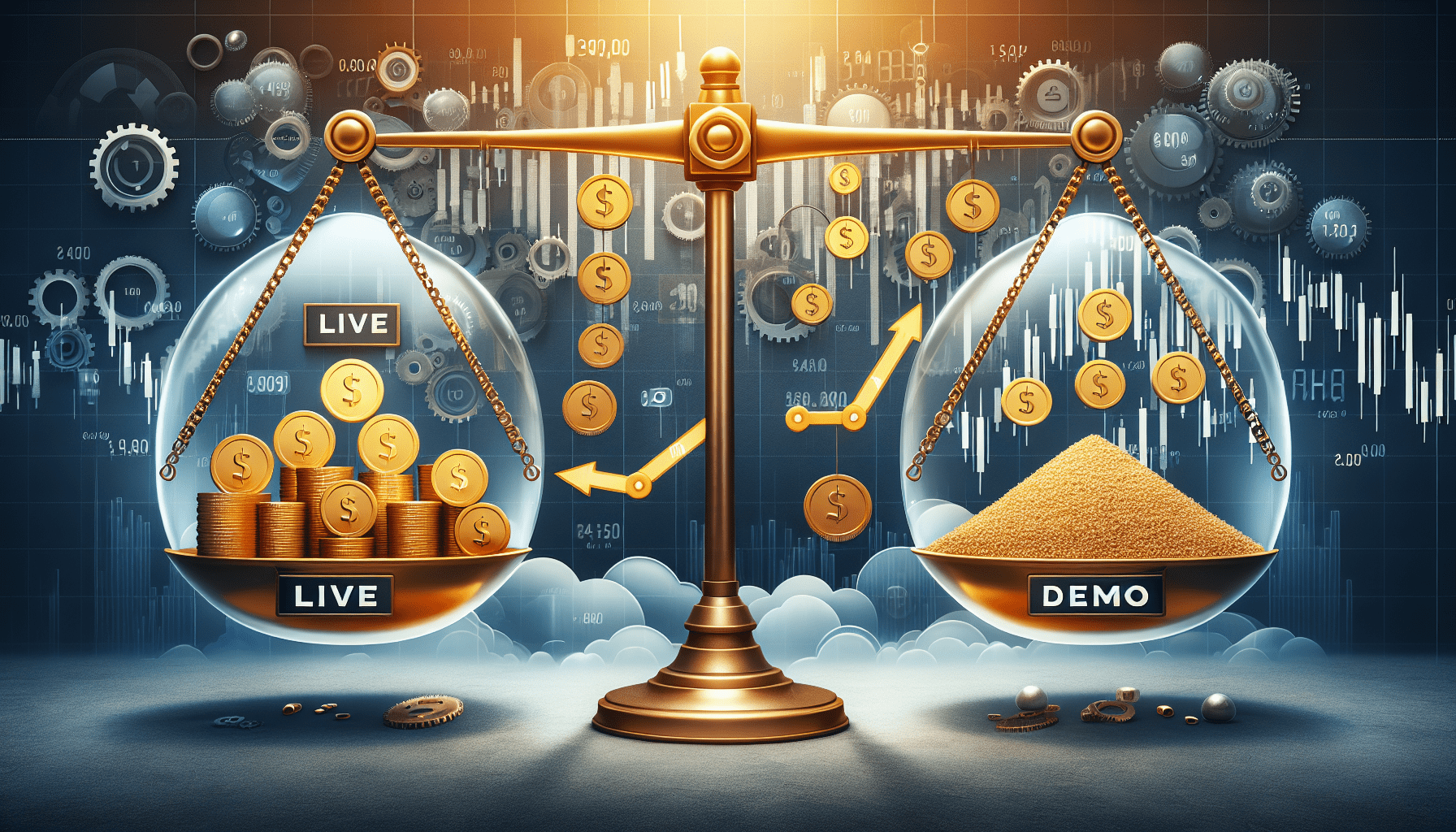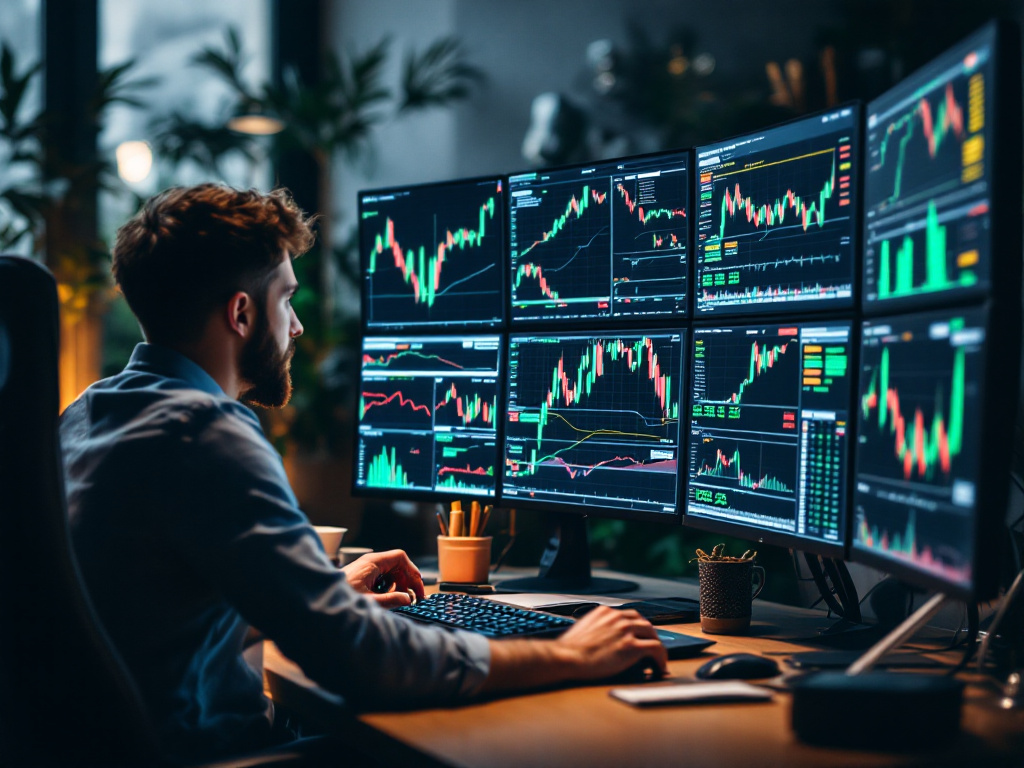Mastering Live vs Demo Trading: A Comprehensive Guide
In the dynamic world of trading, selecting the right platform is crucial for achieving success. Whether you are starting out or have years of experience, understanding the nuances between live trading and demo trading can significantly impact your approach. This guide is designed to help you navigate through the complexities of live vs demo trading, offering insights on how to choose between live and demo trading platforms, while also highlighting the advantages and limitations associated with each.
Modern trading solutions have evolved rapidly, with technology playing a central role in streamlining operations. Live trading platforms offer real market environments where strategies are tested against volatile movements, while demo trading platforms provide a risk-free environment to practice without using real money. By comparing live trading and demo trading features, traders can make informed decisions, ensuring a balanced progression from simulated practice to real money trading.
Understanding Live Trading
Live trading involves executing real transactions on the market and engaging with live trading platforms. For many, this is the ultimate test of their trading strategy and emotional control, as every decision carries financial consequences. In addition, several top-rated live trading platforms for beginners are emerging, offering intuitive interfaces, real-time data feeds, and robust risk management tools. These platforms empower traders to harness market volatility, testing theories with real capital under genuine market conditions.
The advantages of live trading are manifold. It provides immediate feedback on your trading strategies, helps build crucial market intuition, and fosters a deeper understanding of market dynamics. However, the risk factor is inherently higher, which can affect new traders who have not yet mastered emotional discipline and a structured approach. Hence, many beginners lean towards using demo trading platforms as a practice ground before diving into live trading environments.
Before transitioning into real-market activities, it is essential to establish a strong foundation. Understanding the market trends, the impact of news, and the technical aspects of chart analysis are additional benefits that live trading offers. For instance, when comparing live trading vs demo trading, the primary difference lies in the emotional engagement and risk exposure. The learning curve in live environments is steep, requiring traders to adapt quickly and incorporate corrective measures in real time. This real-world experience is invaluable, particularly when evaluating the advantages of live trading over demo trading.
Exploring Demo Trading
Demo trading platforms provide traders with a simulated market experience without any financial risk. These platforms use virtual money, allowing users to practice and perfect their strategies while making no real-world financial commitments. For novices, demo trading platforms serve as a testing ground to experiment with innovative strategies, tools, and indicators in a controlled environment. This space is crucial for understanding the basics of trading before transitioning to live markets.
One major advantage of demo trading is the opportunity to experiment freely. This environment is optimal for testing various trading scenarios without the fear of losing actual funds. In many ways, demo trading platforms offer a playground where traders can learn the ropes at their own pace, sharpen their skills, and build confidence. Furthermore, a comparison of live trading and demo trading features reveals that while live trading demands an emotional readiness, demo trading is educational and stress-free.
However, it is important to note that trading on demo platforms does not fully capture the psychological pressure of real-money trading. The market behavior in a demo account may differ from real trading conditions. Therefore, while demo platforms are excellent for building expertise, one must be cautious when transitioning to live trading to understand and manage the emotional and financial implications.
Comparative Analysis: Live vs Demo Trading
When considering live trading platforms versus demo trading platforms, several critical factors come into play. Key differences include the following:
- Risk Exposure: Live trading involves real risks with real money, which can significantly affect a trader’s psychology. In contrast, demo trading is completely risk-free and allows for a relaxed learning environment.
- Market Dynamics: Live trading provides access to real-time market data, allowing traders to make immediate decisions based on live market movements. Demo trading, while useful, may not always replicate the speed and unpredictability of the market.
- Toolsets and Features: Many brokers offer both live and demo accounts. The best live trading platforms and the best demo trading platforms differ in terms of features like charting tools, risk management interfaces, and user experience. For example, platforms that offer live trading platforms with free demo accounts help users seamlessly transition between practice and real trading environments.
- Emotional Factors: The absence of financial risk in a demo account prevents the emotional highs and lows associated with live trading. This makes demo trading ideal for beginners who are still familiarizing themselves with market behavior.
Ultimately, the decision between live and demo trading should be driven by your current skill level, risk tolerance, and trading goals. If you are a beginner eager to learn, starting with a demo account is advisable. Conversely, if you already possess a robust trading plan and a well-honed strategy, live trading might be the logical next step.
How to Choose Between Live and Demo Trading Platforms
Making the right choice between live and demo trading platforms largely depends on individual goals and trading experience. Here are some points to consider:
- Experience Level: Beginners benefit immensely from demo trading as it allows them to hone their skills without the fear of losing money. Over time, moving to live trading platforms can help in gaining real-world experience.
- Risk Management: Evaluate whether the platform offers robust risk management tools. Live trading requires tools that can help manage exposure and protect investments during volatile market periods.
- Educational Resources: Choose platforms that provide comprehensive tutorials, webinars, and support to help you understand both the technical and emotional facets of trading.
- Accessibility and Interface: An intuitive, user-friendly interface is crucial for both live and demo trading. Consider platforms that offer seamless transitions between testing and execution modes.
- Feedback and Analytics: Real-time performance analytics can be invaluable in assessing the effectiveness of your strategies. Platforms that integrate detailed reporting can help traders refine their approach over time.
By considering these factors, you can make an informed choice that aligns with your strategic goals. Whether you aim to explore the best live trading platforms or the best demo trading platforms, a balanced approach will ultimately enhance your trading proficiency.
Moreover, understanding how to choose between live and demo trading platforms is pivotal. Many brokers now offer hybrid models where you can seamlessly switch between demo and live modes, allowing you to gradually step into the live environment while still having a safety net to practice.
Evaluating the Best Trading Platforms
Choosing the right trading platform is not just about deciding between live and demo accounts; it is equally about evaluating the tools and features on offer. For traders looking for a seamless experience, platforms that integrate both live trading vs demo trading options provide a robust environment to test and implement strategies. Platforms that offer free demo accounts serve as a practical introduction to their toolset, allowing users to familiarize themselves with the interface and functionality before committing real funds.
When evaluating these platforms, consider the following:
- Security: Ensure that the platform uses advanced security measures to protect your data and funds.
- User Experience: A clear and intuitive design can significantly impact how quickly you learn and adapt.
- Support Services: 24/7 customer support and educational resources can provide the assistance you need during critical trading moments.
- Cost: Compare fees, spreads, and other costs associated with account maintenance. Transparent pricing can be a sign of a trustworthy platform.
For the intelligent trader, this comprehensive evaluation not only aids in choosing between a live or demo account but also ensures that the selected platform is in line with long-term trading goals. With a careful evaluation, the transition from demo trading to live trading becomes a natural evolution, built on a foundation of solid practice and understanding.
Conclusion: Your Path to Trading Success
In conclusion, both live and demo trading platforms offer unique advantages that cater to different stages of a trader’s journey. While demo trading allows for risk-free practice and strategy refinement, live trading places you in the thick of real market conditions—each playing a crucial role in building a well-rounded trading experience. As you progress, consider starting with a demo account and gradually transitioning to live environments once you have honed your skills and built confidence. Remember, the ultimate goal is to develop a strategic, resilient approach that balances learned techniques with market realities.
This guide has provided insights into the core differences between live vs demo trading, empowered you with strategies to select the best trading platforms, and offered practical tips for managing your trading journey. By carefully analyzing key attributes like risk exposure, market dynamics, and the available educational resources, you can achieve a smooth, informed progression from simulation to live execution. Happy trading!





